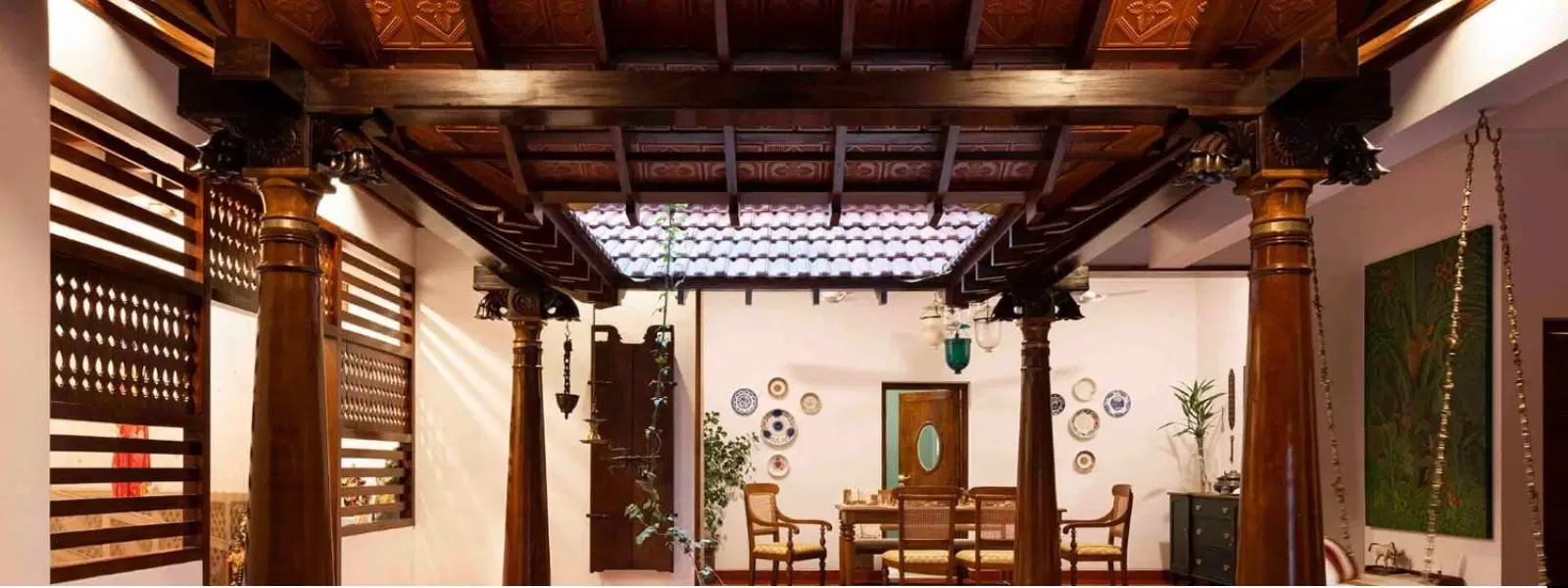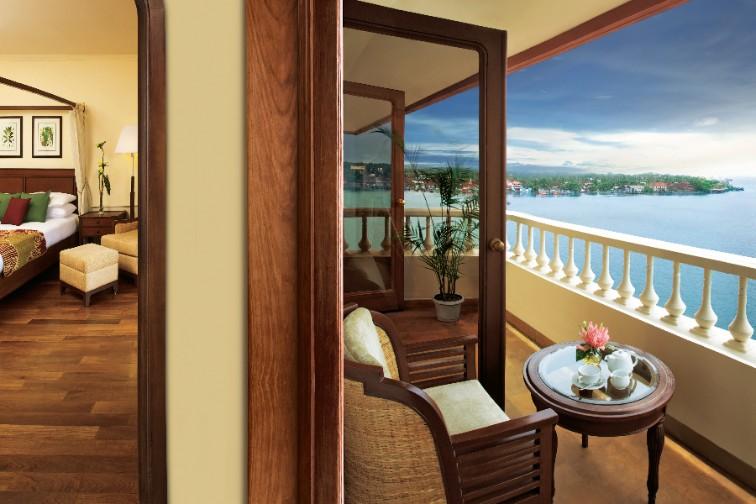
Hotels
•03 min read

Imagine walking through a serene village in Kerala, where traditional homes boast intricate wooden carvings and designs that echo timeless beauty. The wooden architecture of Kerala traditional homes is a perfect blend of heritage, functionality, and aesthetics—a living history that captivates with every detail. In this blog, we will answer the frequently asked questions about these ethereal structures, exploring their design, materials, and the cultural legacy they embody.
Kerala’s traditional home architecture is characterized by the extensive use of timber and natural materials. These homes showcase intricate carvings that not only serve decorative purposes but also enhance structural integrity. The designs are eco-friendly, reflecting the region's sensitivity to nature. The climate and lush landscapes visibly influence the architectural style, bringing elements of ventilation, natural light, and harmonious integration with the outdoors into every home.
The origins of these wooden homes date back centuries, drawing from vernacular architecture that utilized age-old construction techniques. Cultural and religious influences have also played a significant role in shaping these designs. Each carving and joinery hints at ancestral wisdom and the deep-rooted beliefs in communal living. This rich history explains why traditional Kerala home architecture remains a celebrated cultural symbol not only in India but around the world.
Nalukettu is the emblem of Kerala’s heritage home design. Its central courtyard, known as Nadumuttam, serves as a communal hub where family life blossoms. This design is celebrated for balancing privacy with community, symbolizing joint family traditions. Variations such as Ettukettu and Pathinarukettu further extend these principles into more elaborate arrangements, each exuding a unique charm while staying true to their roots.
In addition to the central courtyard, traditional Kerala homes incorporate features such as the Poomukham, a welcoming verandah that greets visitors. The Charupadi, a wooden seating arrangement, offers a relaxed space for conversation, while the Padippura acts as an ornate entrance gate that encapsulates the home’s spirit. The use of sloping roofs and precise wooden joinery are not mere aesthetic choices—they are practical responses to the region’s rainy weather and humidity.

Did You Know? Kerala’s wooden homes are built using traditional joinery techniques that require no nails, ensuring durability and flexibility even in the region’s humid climate.
The construction of these homes relies heavily on robust and resilient types of timber such as teak, rosewood, and even jackfruit wood. These woods are naturally suited to Kerala’s climate, offering resistance to moisture while aging gracefully over time. The choice of timber not only guarantees longevity but also contributes to the mesmerizing aesthetics that are so prized in traditional Kerala home architecture.
The intricate designs that adorn Kerala’s homes are the result of unparalleled craftsmanship passed down through generations. Local carpenters, with their profound expertise, transform raw timber into sophisticated structures using techniques honed over centuries. This dedication to the craft ensures that every home remains a unique piece of art, marrying functionality with ornamental charm.
Modern architects have begun to incorporate the hallmarks of traditional Kerala wooden architecture into contemporary designs. By fusing heritage with modern building techniques, they create spaces that respect tradition while meeting current needs. This trend not only revives the rustic charm of Kerala homes but also champions sustainable and eco-friendly design practices that resonate deeply with today’s environmentally conscious society.
Despite the allure of modernity, preserving the legacy of traditional wooden construction in Kerala remains challenging. Restoration projects and heritage conservation efforts play a crucial role in keeping these architectural masterpieces intact. Local communities, alongside conservationists, continue to celebrate and maintain this cultural art form, ensuring that future generations can marvel at the intricate wooden craftsmanship in Kerala homes.

Kerala’s traditional homes primarily use timber along with laterite stone and clay tiles, making wood the standout choice for both structure and decoration.
Kerala houses captivate with their harmonious blend of aesthetics and function. Their intricate wooden craftsmanship, eco-friendly materials, and thoughtful design reflect a deep cultural legacy.
Nalukettu is a traditional design featuring a central courtyard surrounded by rooms, mirroring the joint family culture and offering natural ventilation and light.
Kerala’s architectural repertoire includes Nalukettu, Ettukettu, and Pathinarukettu, along with iconic houseboats (Kettuvallam) that exemplify wooden craftsmanship and regional design.
Unique features include sloping roofs, central courtyards, ornamental wooden carvings, the inviting Charupadi seating, and eco-friendly materials like timber and laterite stone.
The wooden architecture of Kerala traditional homes is more than just a style—it is a living testament to the state’s cultural heritage and architectural ingenuity. From the precise timber joinery to the eco-friendly materials, these homes beautifully embody nature and tradition working in harmony. By exploring their distinctive design and historical significance, one can truly appreciate the timeless allure of Kerala’s ancestral structures.